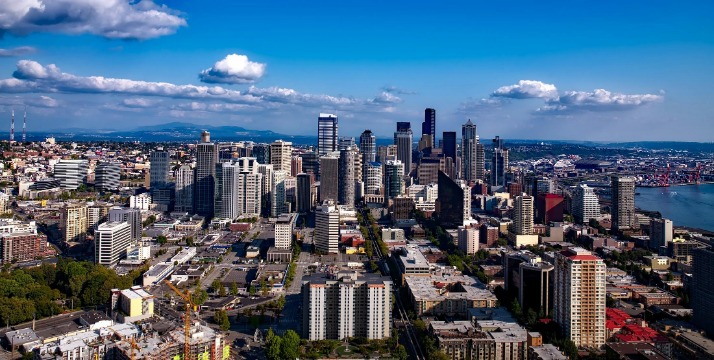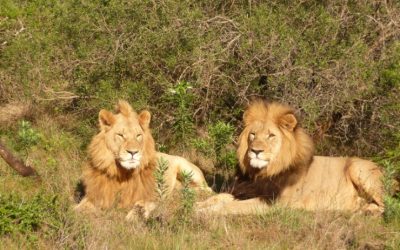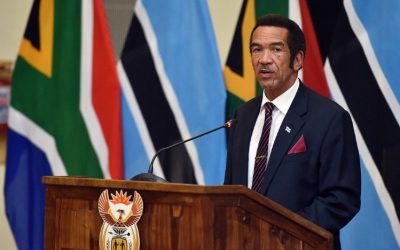Gaborone: The Capital City
Gaborone, the vibrant capital city of Botswana, is a bustling hub of culture, commerce, and government. Situated near the border with South Africa, it serves as the political and economic center of the country. With its mix of modern infrastructure and traditional influences, Gaborone offers a unique glimpse into Botswana’s rapid development and rich heritage.
Overview and Geography
Gaborone is the capital city of Botswana and serves as the political, economic, and cultural hub of the country. It is situated in the southeastern part of Botswana, near the border with South Africa, and functions as a key center for government administration and commerce. The city has experienced rapid growth over the past few decades, transforming from a small village into a bustling urban center.
Geographically, Gaborone is located on the south bank of the Notwane River, within the Kalahari Desert region. The city enjoys a semi-arid climate characterized by hot summers and mild winters. Its proximity to the border with South Africa has fostered cross-border trade and close economic ties. The landscape around Gaborone features flat plains with sparse vegetation, typical of the Kalahari environment, complemented by modern infrastructure and urban planning that supports its status as Botswana’s administrative capital.
Economic Significance
Gaborone, the capital city of Botswana, serves as the political and administrative center of the country. Located in the southeastern part of Botswana, it has experienced rapid growth over the past few decades, transforming from a small town into a bustling metropolis. The city is known for its modern infrastructure, government institutions, and vibrant commercial sectors.
Economically, Gaborone is a key driver of Botswana’s growth, contributing significantly to the nation’s GDP. It hosts numerous multinational companies, financial institutions, and government agencies, making it a hub for business and trade. The city’s strategic location near the borders of South Africa and Namibia facilitates regional trade, enhancing its economic importance.
Gaborone’s economy also benefits from sectors such as manufacturing, retail, and services, supported by a growing urban population. Its role in facilitating investment and development positions it as a vital economic zone within Botswana, fostering national prosperity and regional integration. Overall, Gaborone stands out as a pivotal city shaping the economic landscape of Botswana.
Cultural Highlights
Gaborone, the vibrant capital city of Botswana, is a modern hub blending tradition and progress. It is known for its dynamic cultural scene, including local markets, museums, and lively music festivals that showcase Botswana’s rich heritage. Visitors can explore the National Museum and Art Gallery, which displays indigenous art, history, and artifacts. The city also features stunning landmarks such as the Gaborone Game Reserve, offering a glimpse of Botswana’s diverse wildlife. Gaborone’s vibrant streets, warm hospitality, and cultural diversity make it a captivating destination for travelers eager to experience Botswana’s urban and cultural landscape.
Facilities and Infrastructure
Gaborone, the capital city of Botswana, is a vibrant urban center known for its modern facilities and well-developed infrastructure. It serves as the political, economic, and cultural hub of the country, offering a range of amenities to residents and visitors alike. The city boasts a network of paved roads, reliable public transportation, and essential services such as healthcare, education, and banking institutions. Gaborone also features shopping malls, entertainment centers, and recreational parks, making it a comfortable place to live and work. Additionally, the city’s infrastructure continues to expand with ongoing developments aimed at enhancing connectivity and sustainability, reflecting Botswana’s growth and progress as a nation.
Francistown: The Gateway to the North
Francistown, often referred to as the Gateway to the North, is a vibrant city located in northeastern Botswana. As one of the country’s oldest towns, it serves as a key economic and cultural hub, attracting visitors and traders alike. Rich in history and surrounded by picturesque landscapes, Francistown offers a unique blend of modern development and traditional charm, making it an essential destination in Botswana’s urban landscape.
Historical Background
Francistown, known as “The Gateway to the North,” is one of Botswana’s most significant cities with a rich historical background. It has played a vital role in the development of the region and continues to be a hub of commerce and culture.
- Originally established in the late 19th century as a gold mining town during the Boers’ gold rush, Francistown’s origins are deeply rooted in mineral wealth.
- During the early 20th century, it grew as a trading center due to its strategic location along the railway line connecting Botswana to neighboring countries.
- The city experienced significant expansion during the mid-20th century, driven by the mining industry, particularly the discovery of gold and nickel deposits.
- Today, Francistown continues to thrive as an important economic and transport hub, serving as a gateway for travelers heading north into the region.
Key Industries
Francistown, known as the Gateway to the North, is a significant city in Botswana that plays a vital role in the country’s economy and development. It is strategically located near the border with Zimbabwe, making it an important hub for trade and commerce. The city boasts a rich history rooted in the gold mining industry and continues to thrive through various modern industries.
Key Industries in Francistown
- Mining: Gold, copper, and nickel mining are central to Francistown’s economy, with the city historically being a mining center.
- Trade and Commerce: Its location near major highways and borders facilitates active cross-border trade with neighboring countries.
- Agriculture: The surrounding regions support livestock farming and crop cultivation, contributing to the local economy.
- Manufacturing: Small-scale manufacturing industries, including construction materials and automotive parts, are developing within the city.
- Transport and Logistics: As a major transit point, transportation services and logistics companies thrive, supporting regional connectivity.
Tourist Attractions
Francistown, known as the Gateway to the North, is a vibrant city in Botswana that offers a rich blend of history, culture, and natural beauty. As one of Botswana’s oldest towns, it serves as a crucial hub for travelers exploring the northern regions of the country. Visitors can enjoy a variety of attractions and activities that showcase the city’s unique heritage and scenic landscapes.
Tourist attractions in Francistown include the Supa Ngwao Museum, which provides insights into the local history and culture, and the White City Stadium, a popular spot for sports and entertainment events. Nature lovers can explore the nearby Tswapong Hills, offering hiking, birdwatching, and stunning panoramic views. The nearby Khama Rhino Sanctuary is also an essential visit for wildlife enthusiasts, offering opportunities to see rhinos and other native animals in their natural habitat. Additionally, the city’s vibrant markets and local eateries give visitors a taste of authentic Botswana cuisine and crafts, making Francistown a must-visit destination for anyone exploring the northern part of Botswana.
Transportation Networks
Francistown, known as the Gateway to the North, is a vital city in Botswana that serves as a major hub for transportation and connectivity in the region. Its strategic location makes it an essential crossroad for traders, travelers, and freight movement within the country and beyond.
The transportation networks in Francistown are well-developed, facilitating efficient movement of people and goods. The city is connected through various modes of transportation, making it a key link between different parts of Botswana and neighboring countries.
- Road Networks: Francistown is served by a comprehensive road system, including national and regional roads that connect it to Gaborone, Kasane, and other major cities. The roads are maintained to support heavy vehicle traffic, vital for trade and commerce.
- Rail Infrastructure: The city is an important railway junction, with the Botswana Railways network intersecting through Francistown. This railway connection is crucial for transporting minerals, agricultural products, and other commodities.
- Air Transport: Francistown has an airport that facilitates domestic flights and supports regional connectivity. It plays a significant role in boosting tourism and business travel within Botswana and to neighboring countries.
Maun: The Tourism Hub
Maun, often regarded as the gateway to Botswana’s renowned wildlife and safari adventures, is a vibrant city that serves as the tourism hub in the region. Nestled on the edge of the Okavango Delta, it offers travelers a unique blend of adventure, culture, and natural beauty. As a bustling center for eco-tourism, Maun provides an authentic experience of Botswana’s rich biodiversity and warm hospitality, making it an essential stop for those exploring the country’s diverse cities.
Role as a Gateway to the Okavango Delta
Maun is renowned as the tourism hub of Botswana and serves as the primary gateway to the breathtaking Okavango Delta, one of Africa’s most spectacular natural wonders. Located in the northwestern part of the country, Maun has developed into a vibrant city that attracts travelers from around the world eager to explore the delta’s diverse wildlife and pristine landscapes.
As the gateway to the Okavango Delta, Maun offers essential services, including safari operators, lodges, and transportation options that facilitate access to the delta’s intricate waterways and lush ecosystems. The city also features amenities for tourists, such as markets, craft shops, and cultural experiences that showcase Botswana’s rich heritage.
Maun’s strategic position and infrastructures make it an ideal starting point for safaris, aerial tours, and water excursions, reinforcing its role as a crucial hub in Botswana’s tourism industry. Its vibrant community and natural attractions continue to draw visitors, underpinning the city’s reputation as a must-visit destination for adventure seekers and nature lovers alike.
Tourism and Hospitality
Maun, often referred to as the Tourism Hub of Botswana, plays a vital role in the country’s tourism and hospitality industry. Nestled on the edge of the Okavango Delta, Maun serves as the gateway for travelers exploring one of Africa’s most iconic wilderness areas.
As a major hub for eco-tourism, Maun offers a diverse range of accommodations, from luxury lodges to camping sites, catering to all types of travelers. The city’s vibrant hospitality sector provides essential services that support safaris and outdoor adventures, making it a popular starting point for exploring the delta’s rich wildlife and natural beauty.
Maun’s strategic location and well-developed infrastructure have contributed significantly to its reputation as a premier tourism destination in Botswana. Visitors are attracted not only by its proximity to the Okavango Delta but also by the opportunity to experience Botswana’s unique culture and warm hospitality.
Local Culture and Traditions
Maun, often referred to as the tourism hub of Botswana, is a vibrant city nestled on the edge of the incredible Okavango Delta. It serves as the gateway for travelers seeking to explore Botswana’s rich wilderness and diverse wildlife. The city is renowned for its warm hospitality and lively local culture, which reflects a blend of traditional Tswana customs and modern influences.

Visitors to Maun can immerse themselves in the local traditions by experiencing Batswana music, dance, and crafts that highlight the community’s heritage. Markets and cultural festivals often showcase handmade jewelry, textiles, and artifacts, offering a glimpse into the city’s vibrant artisanal practices. The city’s welcoming atmosphere encourages cultural exchange and appreciation.
Maun’s surroundings play a significant role in shaping its cultural identity, with the Okavango Delta providing not only natural beauty but also inspiration for local storytelling, art, and daily life. Overall, Maun stands out as a captivating destination where tourism, culture, and tradition intertwine to create an unforgettable experience for visitors from around the world.
Infrastructure and Developments
Maun, often referred to as the gateway to the Okavango Delta, is a prominent tourism hub in Botswana that has seen significant infrastructural development in recent years. Its strategic location and growing popularity among tourists have prompted investments in transportation, accommodation, and amenities to boost the local economy.
The city boasts well-maintained roads, regional airports, and facilities that accommodate the influx of visitors exploring the natural wonders of the region. The development of lodges, tour operators, and safaris has further cemented Maun’s reputation as a central point for exploring Botswana’s wildlife and scenic landscapes.
Ongoing projects focus on sustainable development, ensuring that tourism growth benefits local communities while preserving the area’s rich biodiversity. Efforts to improve water supply, sanitation, and communication infrastructure are also underway to support both residents and visitors.
Overall, Maun exemplifies how strategic infrastructure investments and environmentally conscious development can enhance a city’s role as a tourism hub, contributing significantly to Botswana’s reputation as a premier safari destination.
Serowe: The Traditional Hub
Serowe is a historic and culturally significant city situated in the central part of Botswana. Known as the traditional hub of the Botswana Botswana, it is renowned for its rich heritage, vibrant community, and important role in the nation’s history. As one of Botswana’s major towns, Serowe offers a unique blend of ancient traditions and modern development, making it a fascinating destination for visitors and an essential part of Botswana’s urban landscape.
Historical Significance
Serowe is a prominent city in Botswana renowned for its rich history and cultural significance. Often referred to as the traditional hub of Botswana, it holds a special place in the nation’s heritage as the birthplace of many Botswanan leaders and cultural practices. The city is home to the Phuthadikobo Museum, which showcases the history, culture, and legacy of the Tswana people, emphasizing its role as a center for preserving Botswana’s traditions. Historically, Serowe was established as a settlement in the early 20th century and quickly grew into a vital center for trade, politics, and traditional governance. Its deep-rooted historical significance is reflected in its connection to notable figures such as the national hero, Khama III, and its role in Botswana’s path towards independence. Today, Serowe remains a symbol of Botswana’s cultural identity and a testament to its historical resilience and unity.
Royal Heritage
Serowe, known as the traditional hub of Botswana, holds a significant place in the nation’s history and culture. This city is renowned for its deep-rooted royal heritage and its role as a center of cultural preservation. As the hometown of numerous prominent Batswana leaders, including the legendary Khama III, Serowe embodies the pride and identity of Botswana’s people.
The city’s rich history is reflected in its numerous historical sites, including the Khama III Memorial Museum, which showcases artifacts and stories related to Botswana’s royal legacy. Serowe also hosts traditional festivals and ceremonies that celebrate the customs and traditions passed down through generations, maintaining its status as a vibrant cultural hub.
Modern Serowe blends tradition with development, featuring educational institutions, government offices, and markets that serve the local community and visitors alike. Its strategic importance and cultural significance make Serowe a noteworthy city in Botswana, symbolizing the country’s heritage and ongoing legacy.
Community and Lifestyle
Serowe is a prominent city in Botswana known for its rich cultural heritage and vibrant community life. As one of the oldest towns in the country, it serves as a traditional hub where history and modernity blend seamlessly, fostering a unique lifestyle for its residents.
- Historical Significance: Serowe is the birthplace of Botswana’s national hero, Khama III, and holds great historical importance in the nation’s independence movement.
- Cultural Heritage: The city celebrates its heritage through traditional ceremonies, local crafts, and historical sites that attract visitors and preserve the local identity.
- Community Life: Serowe boasts a tight-knit community with active social gatherings, markets, and events that promote unity and cultural pride.
- Modern Developments: Despite its traditional roots, Serowe has seen infrastructural growth, including schools, healthcare facilities, and business ventures that enhance the quality of life.
- Lifestyle: Residents enjoy a balance of traditional customs and modern conveniences, influenced by Botswana’s broader cultural landscape and the city’s role as a rural-urban interface.
Notable Landmarks
Serowe is a prominent city in Botswana known as the traditional hub of the country’s Tswana people. It holds cultural and historical significance, serving as a center for local customs and traditions. The city is renowned for its warm community and vibrant cultural festivals that celebrate Botswana’s rich heritage.
Notable landmarks in Serowe include the Khama II Memorial Museum, which showcases the history of the influential Khama family and the early days of Botswana’s independence. The Serowe Kalangasbula Monument is another important site, commemorating local leaders and historical figures who played a vital role in the nation’s development. Additionally, the nearby Khama Rhino Sanctuary provides a natural attraction for visitors interested in wildlife conservation and game viewing.
Selibe Phikwe: The Mining Town
Selibe Phikwe is a vibrant mining town situated in the central part of Botswana. Known for its rich copper and nickel deposits, the town has historically thrived due to the mining industry, shaping its economic and social landscape. As one of Botswana’s key urban centers, Selibe Phikwe reflects the country’s industrial heritage and offers a unique glimpse into its development trajectory.
Mining Industry Overview
Selibe Phikwe is a prominent mining town located in Botswana, renowned for its rich mineral resources and vibrant industrial activity. Historically, the town developed around the copper and nickel mines, which played a crucial role in Botswana’s economic growth during the late 20th century. The mining industry in Selibe Phikwe has significantly contributed to employment and infrastructure development in the region.
The mining operations in Selibe Phikwe are characterized by large-scale extraction and processing facilities that cater to both local and international markets. Copper and nickel are the primary minerals mined here, with the extraction process involving open-pit mining techniques. The industry has faced challenges such as fluctuating commodity prices and the need for technological upgrades, prompting efforts to diversify the local economy.
Overall, Selibe Phikwe remains a vital industrial hub within Botswana’s cities, with its mining industry continuing to influence the town’s socioeconomic landscape. While efforts are ongoing to revitalize and diversify its economy, the town’s mining heritage remains a defining feature of its identity within the country’s mining sector.
Economic Contributions
Selibe Phikwe, a renowned mining town in Botswana, has significantly contributed to the nation’s economy through its robust mining industry. The town’s primary economic activity revolves around copper and nickel mining, which has fostered job creation and stimulated local businesses. These mining operations have not only increased revenue for the government but have also supported infrastructure development within the region. Additionally, Selibe Phikwe’s economic success has helped in diversifying Botswana’s economy beyond diamond mining, showcasing the importance of mineral resources in national growth. The town’s mining sector continues to play a vital role in sustaining employment and economic stability for its residents and the broader Botswana community.
Urban Development
Selibe Phikwe, known as the mining town of Botswana, has experienced significant urban development driven by its copper and nickel mining industries. This town, located in the eastern part of the country, exemplifies the impact of resource-based industries on urban growth and infrastructure expansion.
- The town was established in the mid-20th century primarily to support the mining operations, leading to rapid population growth and urbanization.
- Infrastructural development has included the construction of housing, roads, schools, and healthcare facilities to accommodate the expanding community.
- Economic diversification has been a challenge, as the community continues to rely heavily on mining, influencing urban planning strategies.
- Recent efforts focus on revitalizing the town through sustainable development, environmental management, and exploring alternative industries.
Environmental and Social Aspects
Selibe Phikwe is a notable mining town in Botswana, well-known for its rich copper and nickel deposits. The town’s development is closely linked to the extractive industry, which has significantly shaped its social and environmental landscape. While the mining activities have contributed to economic growth and employment, they have also raised important environmental concerns and social challenges.
- Environmental Impact: The mining operations have led to land degradation, deforestation, and pollution of local water sources. Tailings and waste materials pose ongoing risks to the surrounding ecosystem, impacting wildlife and local agriculture.
- Social Aspects: The town’s population has experienced rapid growth due to mining activity, resulting in urbanization pressures, housing shortages, and infrastructural strain. Social issues such as health concerns, unemployment following mine closures, and community displacement have also emerged.
- Mitigation Measures: Efforts to address environmental challenges include rehabilitation programs for mined areas and stricter environmental regulations. Community engagement and social programs aim to support local residents and improve living standards.
- Sustainable Development: The future of Selibe Phikwe depends on incorporating sustainable mining practices, diversifying the local economy, and promoting environmental conservation to ensure long-term stability for its residents.
Other Notable Cities in Botswana

Beyond the capital city of Gaborone, Botswana boasts a variety of notable towns and cities that contribute to the country’s rich cultural and economic landscape. These cities offer unique attractions, vibrant communities, and historical significance, making them important destinations for visitors and residents alike. Exploring these other notable cities provides a deeper understanding of Botswana’s diverse heritage and dynamic growth.
Lobatse: The Leather Industry Hub
Lobatse, known as the Leather Industry Hub in Botswana, is a notable city that plays a vital role in the country’s economic development. Located south of Gaborone, Lobatse has developed into a center for leather production and manufacturing, attracting several tanneries and leather goods factories. This specialization has created numerous employment opportunities and contributed significantly to Botswana’s export revenue. The city’s strategic position near the South African border also facilitates trade and commerce with neighboring countries. Beyond its industrial significance, Lobatse features a mix of historical sites and local markets that offer a glimpse into Botswana’s rich cultural heritage. Overall, Lobatse stands out as a key city in Botswana’s industrial landscape and regional trade network.
Molepolole: The Cultural Center
Molepolole is one of the most notable cities in Botswana, renowned for its cultural significance and rich traditions. As a major Kgotla (traditional meeting place), it serves as a hub for preserving the heritage and customs of the Bakwena people. The city is characterized by vibrant communal activities, traditional dance performances, and historic sites that offer insight into Botswana’s history. Visitors to Molepolole can experience authentic cultural practices and witness the community’s strong sense of identity and unity. Its importance as a cultural center makes it a key destination for those interested in exploring Botswana’s traditional way of life.
Jwaneng: The Wealth Capital
Jwaneng is one of the most notable cities in Botswana, often referred to as the wealth capital of the country due to its rich diamond mining industry. Located in the southern part of Botswana, Jwaneng is home to the world’s richest diamond mine, which significantly contributes to the national economy. The city has grown rapidly around this mining operation, becoming a center of wealth and economic activity in Botswana.
- Jwaneng: Known for its diamond riches and economic significance.
- Francistown: The second-largest city, serving as a major commercial and mining hub.
- Maun: The gateway to the Okavango Delta, famous for tourism and wildlife.
- Serowe: A historic city with cultural importance and home to Botswana’s independence movement.
- Molepolole: Known as the largest traditional village in Botswana, rich in cultural heritage.





0 Comments